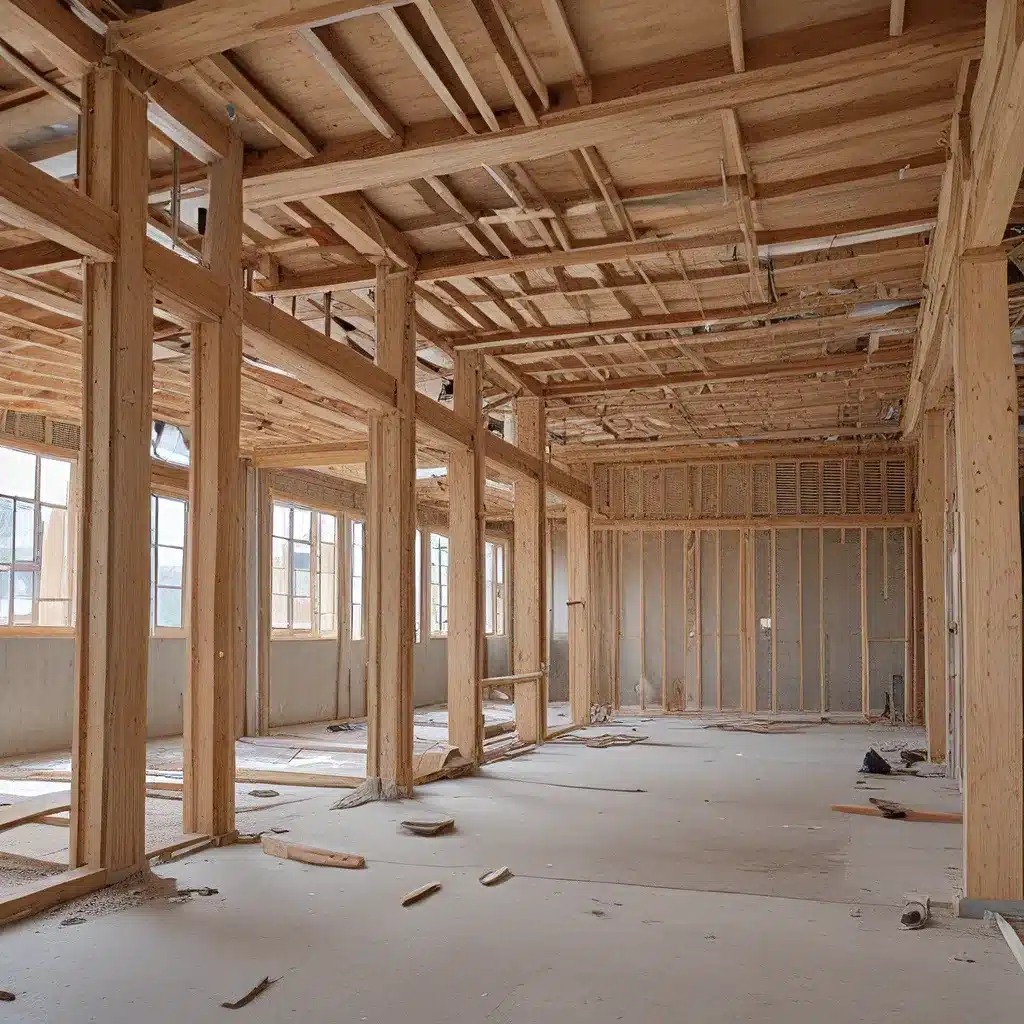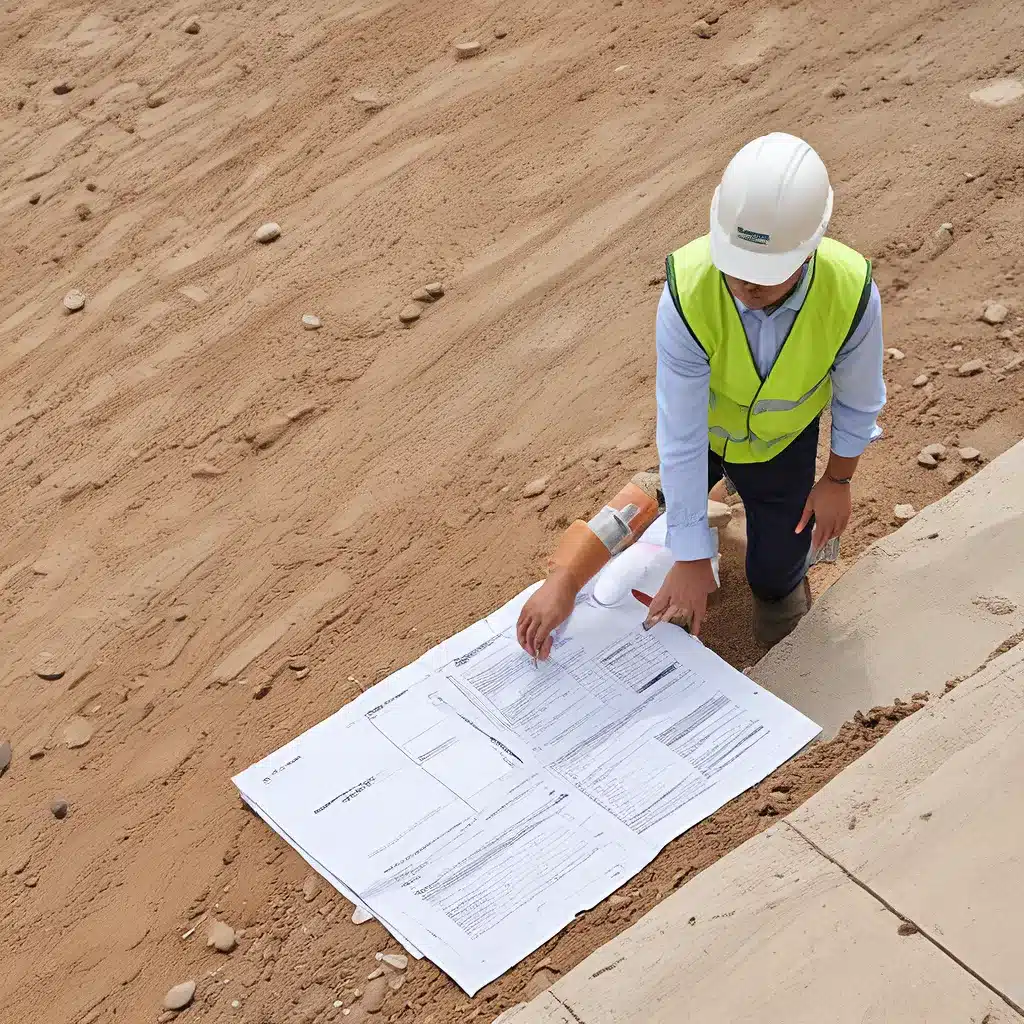
Ah, the good old days of construction – when a dozen burly workers would gather on your driveway, scratch their heads, and try to figure out how to put together your brand new home. Or when a hospital had to shut down for months just to install a few measly bathrooms. Those were the times, right? Well, hold onto your hard hats, folks, because the future of construction is here, and it’s all about prefabrication.
The Prefab Revolution
I remember when I first heard about this “prefabrication” thing. At first, I thought it was just another gimmick – a way for construction companies to cut corners and save a few bucks. But oh, how wrong I was. As I dug deeper into this topic, I realized that prefabrication is nothing short of a construction revolution.
According to Forbes, the practice of off-site construction has been around for thousands of years. But it’s only in the last decade or so that it’s really started to take off. And you know what they say – necessity is the mother of invention. During the last recession, many skilled laborers left the construction industry, and they never came back. Couple that with developers’ constant need for greater efficiency, and prefabricated buildings became the obvious solution.
Rethinking the Construction Process
But it’s not just about the labor shortage, my friends. Prefabrication is a fundamental rethinking of the entire construction process. As Zach Murphy, a project executive and national prefabrication leader at DPR Construction, puts it, “What we’re talking about doing is rethinking decisions that are made too late and advancing them upstream.”
In other words, instead of waiting until the last minute to figure out the details, prefab construction requires you to make those decisions upfront. And that’s where the magic happens. By doing the heavy lifting in a controlled factory setting, you can streamline the entire process, improve quality control, and minimize those dreaded last-minute changes that always seem to throw a wrench in the works.
The Benefits of Prefabrication
But the benefits of prefab don’t stop there. According to a study by Dodge Data & Analytics, architects, engineers, and contractors who have already embraced prefabrication are experiencing some pretty impressive results. We’re talking about improved productivity, better project quality, and – wait for it – increased schedule certainty.
And the best part? This isn’t just a trend that’s limited to a few niche sectors. The study found that the use of prefabrication and modular construction is expected to grow across a wide range of building types, from healthcare facilities and hotels to multifamily projects and college dorms.
The Future is Prefab
Now, I know what you’re thinking – if prefab is so great, why hasn’t it taken over the entire construction industry yet? Well, my friends, the answer is simple: change is hard. As Tom Hardiman, the executive director of the Modular Building Institute, puts it, “The construction industry is very reluctant to change. When things were going well, developers and general contractors may not have felt the pain or need to change. Now they do, and there’s no turning back.”
The Shift Toward Prefab
And that shift is already underway. According to the Dodge Data & Analytics study, architects, engineers, and contractors who have already used prefabrication and modular construction are planning to significantly increase their engagement with these methods, especially for healthcare facilities, hotels, multifamily projects, and college buildings.
But it’s not just about the building types. The study also found that the use of building information modeling (BIM) is closely tied to the benefits of prefab. In fact, among those using BIM on the majority of their projects, 60% credited it with improving the schedule performance of their prefabricated or modular projects, and 50% said it improved budget performance.
Breaking Down the Barriers
Of course, there are still some barriers to overcome. As Trammell Crow principal Jeff DeBruin points out, the loss of flexibility once the ground is broken makes it essential to commit to the design upfront. And certain building types, like mixed-use and office spaces, may not be as well-suited for prefabrication as others.
But these are challenges that can be overcome. And as more and more general contractors and developers see the benefits of prefab, I have no doubt that we’ll see a continued rise in its adoption across the industry.
The Future is Bright for Prefab
So, there you have it, folks – the rise of prefabrication in the general contracting industry. It’s a revolution that’s been a long time coming, and it’s here to stay. From improved productivity and schedule certainty to better project quality, the benefits of prefab are simply too good to ignore.
And as for those good old days of construction, well, let’s just say they’re firmly in the rearview mirror. The future is prefab, and it’s a future that’s looking brighter and brighter every day.
If you’re a general contractor or developer looking to stay ahead of the curve, I highly recommend exploring the world of prefabrication. Who knows, you might just be the next construction pioneer to swap those “too good to be true” stories around the water cooler.
And if you’re in the market for a general contractor who’s on the cutting edge of this prefab revolution, be sure to check out Reading General Contractor. They’re leading the charge when it comes to bringing prefab to the forefront of the construction industry.
Related posts:
No related posts.




